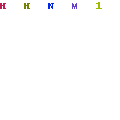 JEMES FERGUSSON was born in 1808 in Scotland and educated in Edinburgh. He emigrated to Kolkata where he worked as a partner in a merchant house. He became a highly successful indigo planter, which enabled him to retire after 10 years in India, settle in London, and get trained as an architect. During his travels across India he became interested in its architecture. Between 1834 and 1843 he made published The Rock-Cut Temples of India (1845). A prolific writer, Fergusson’s other books include The Handbook of Architecture (1855),History of Modern Architecture (1862),Palaces of Nineveh and Persepolis Restored(1851), Trees and Serpent Worship (1868).and The Temples of The Jews in Jerusalem (1878). He also presented papers at the British Institute of Architects on the architecture of southern
JEMES FERGUSSON was born in 1808 in Scotland and educated in Edinburgh. He emigrated to Kolkata where he worked as a partner in a merchant house. He became a highly successful indigo planter, which enabled him to retire after 10 years in India, settle in London, and get trained as an architect. During his travels across India he became interested in its architecture. Between 1834 and 1843 he made published The Rock-Cut Temples of India (1845). A prolific writer, Fergusson’s other books include The Handbook of Architecture (1855),History of Modern Architecture (1862),Palaces of Nineveh and Persepolis Restored(1851), Trees and Serpent Worship (1868).and The Temples of The Jews in Jerusalem (1878). He also presented papers at the British Institute of Architects on the architecture of southernThe architecture of India is rooted in its history, culture and the numerous religions worshipped by the people. The information on architecture was, however, available only in the silpa-shastras, which concerned themselves largely with theoretical and religious matters, and not the forms of existing buildings. A systematic study of Indian architecture and its principles only began in the 19th century through the painstaking works of British scholars and engineers using for the first time, the newly-invented photography and the use of site plans. James Fergusson’s two-volume History of Indian Architecture and History of Eastern Architecture in India, China and Japan, which first appeared in 1876, was the result of such efforts, and was the first-ever major publication of its kind. Fergusson examined and classified ancient Indian architecture into Buddhist, Himalayan, Dravidian and Chalukyan styles, noting that differences in architectural styles could be attributed to differences in religion. A pioneering classic, Fergusson’s History sheds light not only on the forms of ancient Indian architecture, but also the mental landscape of the British scholars who studied it. Though subsequent scholars such as EB Havell and Ananda K Coomaraswamy have criticised Fergusson’s conclusions, the value of his detailed presentation has always been acknowledged. The text is that of the 1910 edition, revised and expanded by James Burgess and R. Phene Spiers.
ISBN: 9788129117359
Author: JEMES FERGUSSON
Published by: Rupa & Co
For more information, please visit www.indiabookmart.com
No comments:
Post a Comment